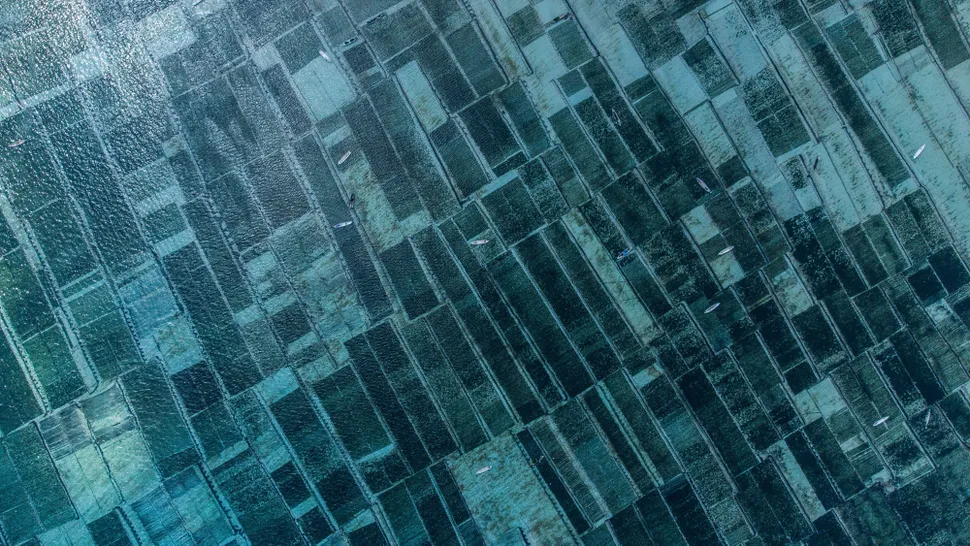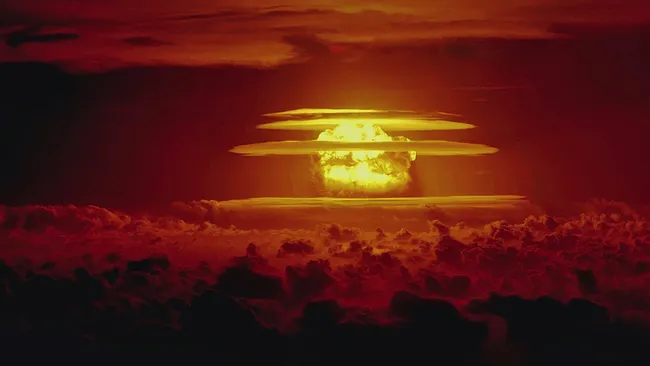Potential Mitigation of Mass Starvation Following Nuclear War Through the Use of a Specific Food Source: Seaweed
A nuclear winter could reduce global calorie production by as much as 90%. But vast kelp farms could help save 1.2 billion lives until temperatures recover.
Seaweed has been identified by scientists as an unexpected and valuable food source that could potentially save countless lives in the aftermath of a devastating nuclear war. The consequences of a nuclear conflict are dire, with the release of massive amounts of soot into the atmosphere causing a significant drop in surface temperatures and a drastic reduction in global calorie production. However, a recent study has revealed that within a relatively short period of nine to 14 months following a nuclear war, extensive kelp farms in the Gulf of Mexico and along the Eastern seaboard could be harvested to provide sustenance for up to 1.2 billion people.
These seaweed farms, at their maximum capacity, would not only replace 15% of the current human food consumption but also contribute to 50% of the existing biofuel production and 10% of animal feed. The findings of this research were published in the journal Earth’s Future on January 9th. Co-author Cheryl Harrison, an assistant professor of oceanography and coastal sciences at Louisiana State University, emphasized the urgency of exploring alternative food sources, as a moderate India-Pakistan nuclear war could put over 2 billion people at risk of starvation, while a U.S.-Russia nuclear war could endanger 5 billion people.
The immediate aftermath of a nuclear war is characterized by the horrifying effects of incineration and radiation poisoning, particularly for those in targeted areas and their surrounding regions. These devastating consequences have been well-documented since the detonation of the atomic bomb “Little Boy” over Hiroshima, Japan on August 6, 1945.
The smaller bomb, with a yield up to five times less than the thermonuclear bombs in current stockpiles, resulted in the deaths of approximately 140,000 individuals within a span of five months. Moreover, it caused the destruction or severe damage of over 60,000 buildings out of the city’s total of around 90,000 structures. However, the most perilous consequence of a nuclear conflict, even on a smaller scale, lies in its potential impact on agriculture. In the catastrophic scenario known as “nuclear winter,” the presence of radioactive dust and smoke would obstruct a significant portion of sunlight. Consequently, temperatures would plummet, suffocating numerous crops worldwide and potentially leading to a global famine that could claim the lives of billions of people.

In a previous investigation, the scientists simulated the catastrophic aftermath of a nuclear war. However, in order to explore the potential survival of certain individuals, the researchers have now simulated the growth of crops in environments where temperatures would not decrease as drastically – specifically, tropical oceans.
According to Harrison, “The ocean, along with water in general, possesses a higher specific heat capacity compared to land. As a result, it retains more heat and is more resistant to heating up or cooling down. This is why radiators are so effective; they store heat and gradually release it over time.” He further explains, “Therefore, the ocean presents an excellent opportunity for alternative food production, as opposed to land-based greenhouses that would require extensive heating during a period when fuel would be in high demand.”
The scientists’ model demonstrated that kelp farms would not only survive but thrive and expand as surface temperatures decreased. This is due to the fact that colder air would cause surface water to sink more, resulting in increased circulation of nutrient-rich water from the depths to replace it.
According to the researchers, the primary uses for kelp grown in farms would be indirect, as the iodine found in seaweed can be toxic to humans in high quantities. However, by utilizing it as animal feed and for biofuel production, it would free up arable land for other crops. This could assist humans in enduring a nuclear winter until the climate begins to recover, which may take decades.
Furthermore, kelp is not only beneficial during a nuclear winter but also in the face of other disruptions to global food systems, such as massive asteroid impacts or volcanic eruptions. For instance, the eruption of Indonesia’s Mount Tambora in 1816 resulted in crop failures and food shortages across the Northern Hemisphere, earning the name “Year Without Summer.”
Harrison stated, “Throughout history, large eruptions have caused famine both regionally and globally. In any case, we must have a plan to sustain ourselves in these sudden scenarios of reduced sunlight.”
This article is republished from livescience under a Creative Commons license. Read the original article.
Do not forget to share your opinion with us to provide you with the best posts !




0 Comments